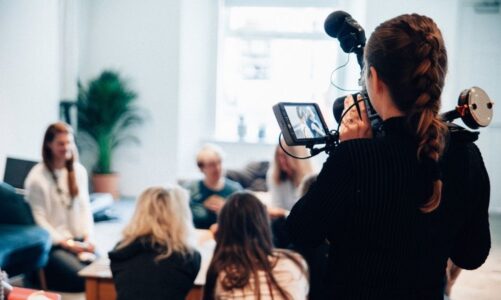Our primary channel for attracting traffic was Facebook Ads (owned by Meta: the company was recognized as extremist and banned in the Russian Federation), which has very effective optimization for conversion or some action. The algorithm is actively learning and, at some point, starts showing ads to the most relevant audience. He adjusts the display of advertising to the cost of a conversion; he finds the audience that is most likely to leave an application and thereby optimizes the price of a lead. More than half of the marketing budget went to this channel – sometimes up to 70%.
They did not try to target the Russian-speaking audience outside of Russia. There were thoughts, but they didn’t even reach the point of a full-fledged analysis to understand what coverage there might be.
We also tried to promote through contextual advertising, but due to the specifics of the community, this turned out to be ineffective. For example, people came with the request “how to find an investor”: they studied the product, applied for it, and said in an interview: “we need an investor.” This is not a request to the community but an apparent demand for money – this is not for us.
Or, for example, people came to us by the word “networking,” but not by potential participants who can give us value, and we offer them. Network marketers, representatives of the information business, coaches, and psychologists came in with a poor understanding of these professions, who believe that networking is a tool to attract customers. Therefore, the context did not work for us. But it may work for a community with a different focus.
Comparison in numbers:
- Target. Lead is expensive – 2-3 thousand rubles. But simultaneously, the payment conversion was 10-15%. When we raised the check to 60 thousand rubles, it began to pay off very well.
- Context. A cheap lead is 500 rubles on average. But the conversion to pay is only 3-5%, while contextual advertising took more energy from the manager. And the leads are cold; you need to think about warming up.
Production: For Others And Our Own
In 2021, we realized that we were tired of writing articles and moved deeper into production:
- Podcasts. They were made simultaneously in audio format for Apple Podcasts, Spotify, and Yandex and in video format on YouTube.
- Video content. These are video podcasts on YouTube, Reels cuts, and Shorts on YouTube.
In production, a team of 12 outsourced people: sound engineer, cameraman, copywriters, and editor. We spend 15,000-20,000 rubles per podcast episode, and it’s cheap.
By the numbers, podcasts get more reach in the video than in audio. This is without paid advertising. We haven’t gone deep into YouTube promotion, so the numbers are small. Reach up to a thousand people per unit of content, but we affect the audience that is relevant to us. And at the same time, we create value for the community members. It worked with articles, and it works with podcasts. The guys from Heg.ai learn more about each other, their experience, and expertise and get exciting or valuable information. It becomes easier for them to recommend the community to those unfamiliar with it. Therefore, we distribute all content within the community.
After a year of studying production as a channel for attracting traffic, we have developed the following strategy :
- We make big, long material – usually for 1.5 hours if you take a podcast. This format is now in focus.
- We cut it into 30-50 units of microcontent.
- We break it down into different forms: reels, three-minute YouTube videos, social media posts, and media articles.
Tools for promoting audio podcasts have not been studied at all. Apple Podcasts can periodically place podcasts at the top for two weeks. Due to this, the audience grows. But we have not tried it yet, so we cannot evaluate its effectiveness.
Also Read: How Can An Expert Increase Blog Audience In 2022? Paid And Free Traffic Channels



